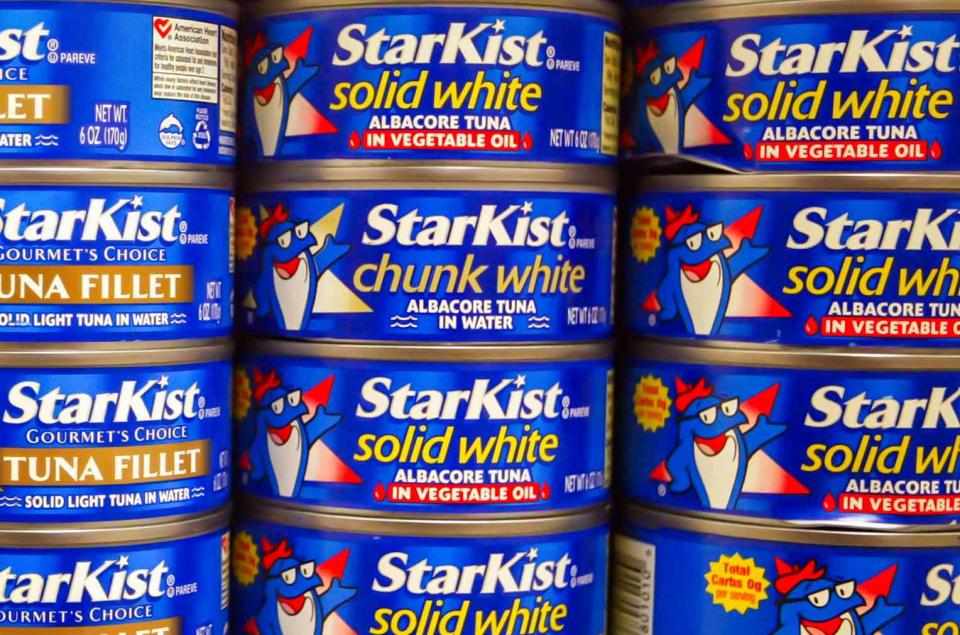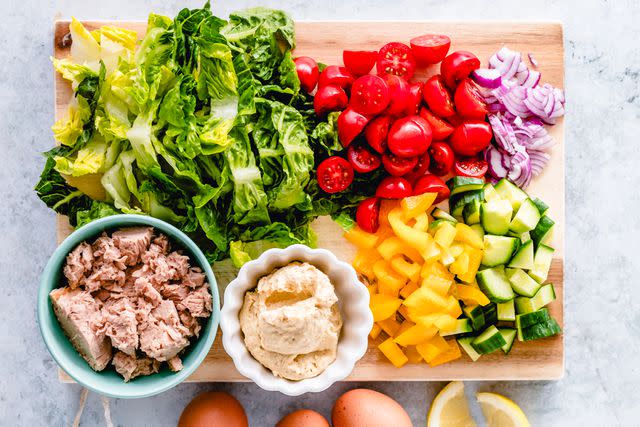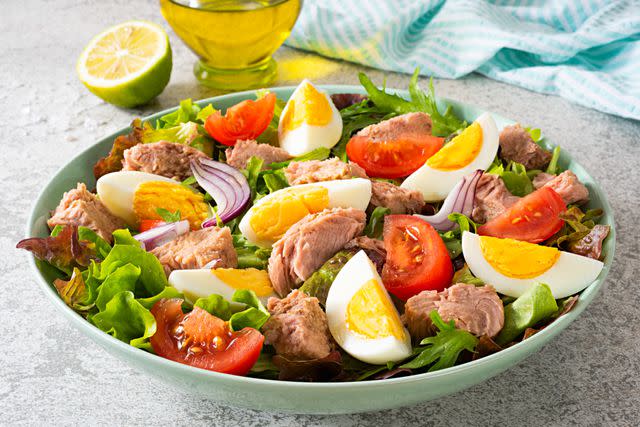Water-Packed vs. Oil-Packed Canned Tuna: Starkist Explains the Difference
The kind you should buy depends on what you want to use it for.

Simply Recipes / Getty Images
As it turns out, tuna salad doesn’t have to be boring and bland. Or so I recently realized as I’ve started finding new ways to incorporate the canned fish into my meals and snacks. The mayo-heavy, textureless tuna salad that once incited fear as a child (dare I also say…disgust?), has now happily been replaced by rice vinegar-spiked renditions or zesty iterations containing beans.
Aside from concerns about sustainability, which are important to me when I shop for tuna, there’s also the species of tuna (albacore vs. yellowfin, for instance) and the way it's been packed (if it's canned in oil or water) to consider, all of which can make choosing the right tin more confusing.
To better understand the difference between oil-packed and water-packed canned tuna, I consulted with Laura M. Ali, MS, RDN, a nutrition consultant for StarKist Co.—one of my favorite tuna brands—to get her insights on the topic.
What Is the Difference Between Oil- And Water-Packed Tuna?
Along with a soft and tender texture, “oil-packed tuna has a richer, more pronounced flavor due to the oil,” explains Ali, “which can add a subtle taste depending on the type of oil used.” The oil saturates the fish, resulting in these texture and taste differences.
On the other hand, “water-packed tuna tends to have a cleaner, more straightforward flavor since it isn't infused with any additional oils or flavors.” Also, because it’s not soaking up the fat and flavor of the oil, it tends to have a firmer and drier texture, making it “more suitable for certain recipes that require flakier tuna.”

Simply Recipes / Getty Images
When Is It Best To Use One Kind Over the Other?
Due to its richer flavor, oil-packed tuna is best used for “dishes like salads, antipasti, and pasta, where the oil can also enhance the dressing or sauce,” says Ali. “Because it retains moisture well, it’s suitable for gourmet sandwiches and ready-to-eat straight from the can.”
Conversely, water-packed tuna is ideal for more traditional applications like tuna salad, casseroles, and the like. Furthermore, explains Ali, “the firmer texture holds up well in dishes such as tuna patties, burgers, and dips.”
Does the Kind of Tuna Change How It Should Be Stored?
While both oil- and water-packed tuna stay shelf stable for years if unopened, “once opened, they should be consumed within a few days,” advises Ali. “Oil-packed tuna may last slightly longer due to the preserving qualities of the oil, while water-packed tuna might dry out faster and may need a bit of water added for storage.” As always, make sure to note the best-by date on the can.
As for storage, Ali says, “after you open the can, you can place any leftovers in a separate food-safe container, put them in the refrigerator, and eat the leftovers within two days.”
What Is the Difference Between Varieties of Tuna?
“Different species of tuna are chosen for their specific characteristics such as flavor, texture, and fat content,” says Ali, “making them more suitable for either oil or water packing.”
For example, albacore tuna—which is mild, sweet, and firm—is more likely to be water-packed whereas yellowfin tuna, “with its mild to moderate flavor and firm, lean texture, is usually found in oil-packed forms,” says Ali. Skipjack can be found canned both ways. This is not a rule but rather a generality, the different species can usually be found both in water and oil.

Simply Recipes / Getty Images
Read the original article on Simply Recipes.


